The future of e-commerce: 7 important trends to watch out
The e-commerce business is expanding as a result of predicted growth and the impact of 2020 on commerce. Every day, more merchants are shifting to online sales, and e-commerce startups are sprouting up all over the country.
Revenues from e-commerce will increase to $6.54 trillion by 2022, up from $3.53 trillion in 2019. Every year, various new trends emerge that might help your company expand and outperform its competition – and 2021 will be no exception.
Let's take a look at the top five e-commerce trends to keep an eye on in 2021.
Voice commerce
People are increasingly relying on voice assistant gadgets such as the Amazon Echo with Alexa and the Google Home with Google Assistant to do everything from waking them up to making online purchases. By 2025, smart speakers will be in 75% of American homes. By 2022, sales of voice commerce are expected to exceed $40 billion. One easy but very efficient strategy to acquiring more organic traffic from voice searches to your eCommerce site, according to Matt Janaway, CEO of MarketingLabs, is to improve your top-level conversion funnel content to include answers to typical customers inquiries surrounding your products or market.
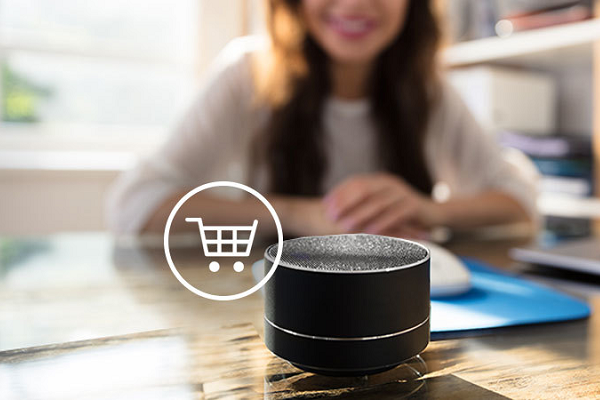
Voice commerce might flourish in this decade
Another factor for voice commerce's rise is the technology's increasing accuracy and convenience. Google and Amazon are promoting regional languages in their virtual assistant gadgets to make shopping more convenient for customers.
As a result, optimizing your online store for voice search is critical. Here are four tips for getting your e-commerce site ready for voice searches:
- Increase your chances of appearing in voice searches by optimizing your content.
- Create a new skill for Alexa and Google Home devices.
- On your website and mobile app, provide voice-based navigation.
- Ensure that your products may be purchased utilizing a simple voice command flow.
AI and AR technologies
By 2022, online retailers will spend $7.3 billion on AI. More than 120,000 stores will use AR technology to provide customers with a more engaging shopping experience. By providing individualized guidance and recommendations to your clients, artificial intelligence (AI) works as your online in-store employee. AI uses a shopper's previous purchase history and browsing activity to recommend things they're likely to buy.

AI innovation in 2021
Online customers, unlike those in physical stores, are unable to try on or check the products they wish to purchase. Augmented Reality (AR) helps customers overcome this barrier by allowing them to view how a product will look on them before purchasing it.
Visual commerce
Visual commerce is the use of graphics to attract customers to engage and convert not just on product pages, but throughout your entire store. Visual commerce is already being used by major businesses to persuade customers to buy. On their homepage, they feature high-quality photos as well as shortcuts to purchase the product directly.

Here are a few outstanding examples of how to use visual commerce:
- To increase quality and loading speed, switch your default products from JPG to JPEG2000 or WebP.
- Make 360-degree photos or movies of your best-selling items.
- Invest in a visual search feature that allows users to look for products by looking at pictures.
- To build attention, repurpose user-generated material on your product pages.
- Create Pinterest visual shopping advertising to attract traffic to your website and purchases.
Mobile commerce
Consumers are more comfortable making purchases on their mobile devices as their trust in online buying grows. Mobile devices are predicted to account for over 73 percent of overall e-commerce transactions by the end of 2021. Furthermore, 30% of online buyers are likely to abandon their shopping carts in the middle of a transaction if your website is not mobile-friendly.
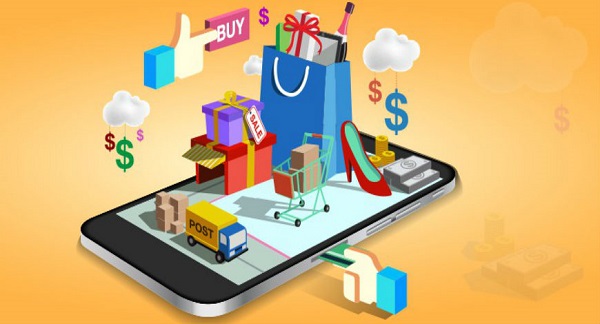
Here are some excellent strategies to make your e-commerce site mobile-friendly:
- Use Google Mobile-Friendly Test to see if your website is mobile-friendly. If you enter your URL into the tool, it will determine whether or not your online store is responsive. It also reveals if your website has any loading troubles.
- For your online store, create a progressive web app (PWA). Customers can read sites that they have previously browsed without having to use the internet because PWAs load faster than a website.
- For shoppers that come to your site on their cellphones, use accelerated mobile pages (AMP).
- Ensure a smooth mobile checkout process and look for methods to make it even easier.
- Manually test your mobile site. Check to see if it's simple to use. Check to see whether you can easily view products on your phone and whether you can zoom in.
Payment options
One of the key reasons why buyers choose a particular brand is the payment choices. Customers will not buy from your e-commerce store if you do not accept their preferred payment option. Apart from debit and credit cards, most internet firms now accept digital wallets (such as Google Pay, Samsung or Apple Pay, and PayPal). Cryptocurrencies, particularly Bitcoin, have a number of advantages for online merchants, including minimal transaction fees and the absence of reverse transactions.
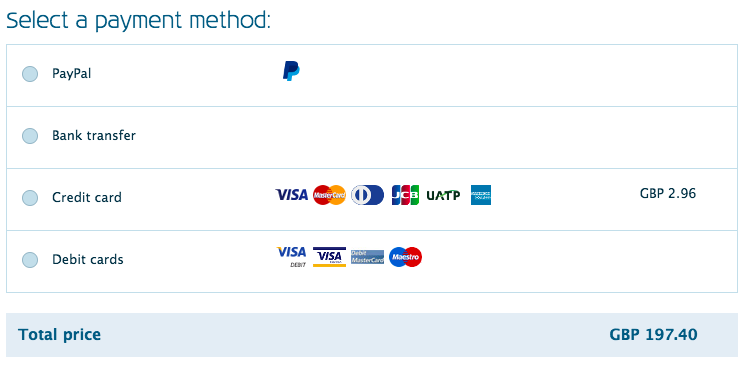
More e-commerce shops may begin to accept cryptocurrency for transactions in 2021. Overstock, for example, has collaborated with Coinbase, a Bitcoin platform, to allow users to purchase using Bitcoin.
Omnichannel
The term "omnichannel retailing" refers to giving customers a consistent and seamless experience across all channels and devices.
In a survey conducted by HBR (Harvard Business Review), 73 percent of respondents claimed they shop using several channels. This information is nearly four years old. To discover customer behaviors and analyze everything linked to the cash flow, use analytics systems like Finteza, which give thorough e-commerce analytics. This type of analytics technology can assist you to determine which products are in high demand, track your profit and loss, and assess consumer loyalty. You may also create reports for events that are important to your business, such as view items, add to cart, checkout progress, and checkout success, using Finteza.
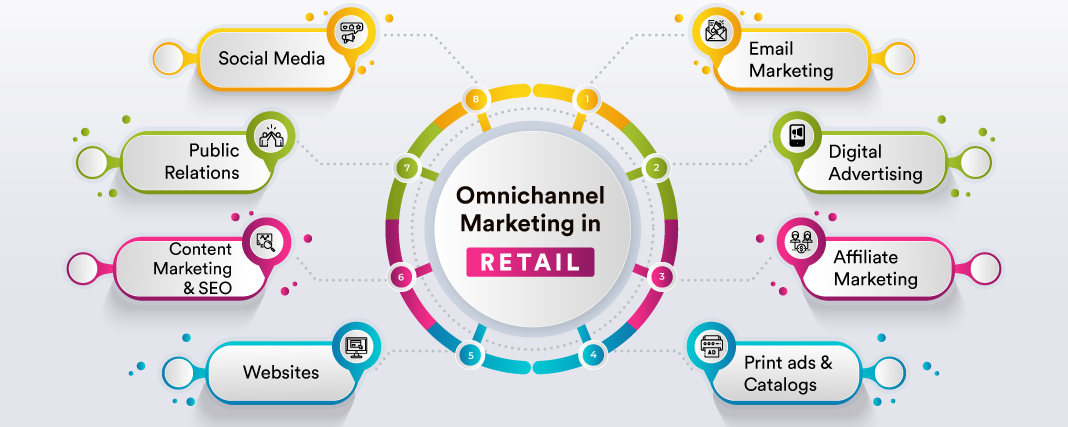
Omnichannel distribution strategy
Here are a few more approaches to provide a consistent omnichannel experience.
- Make sure your website is mobile-friendly. Create a mobile app or a Progressive Web App (PWA) if you have the funds.
- At every opportunity, personalize the customer experience.
- With end-to-end online retail processes, use platforms like SAP Commerce Cloud to ensure a retail and wholesale e-commerce experience.
Dynamic pricing
E-commerce firms can use dynamic pricing to keep a competitive advantage and attract more customers. Even if you sell high-quality products, a poor price plan will not result in significant sales
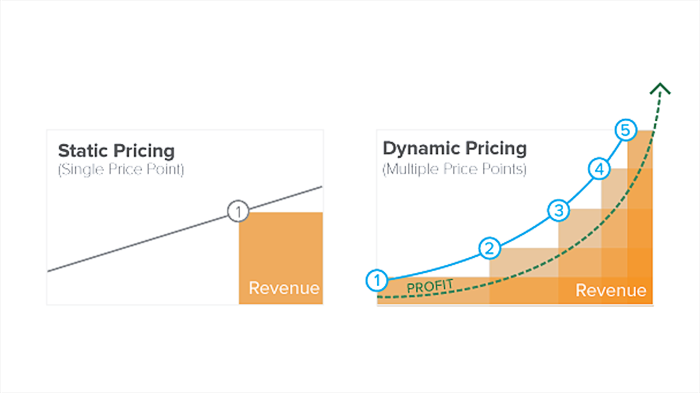
Dynamic pricing model
The pricing plan you choose should, in theory, ensure that your product sells while maximizing profits. To find the optimum product pricing, consider employing dynamic software. Some programs provide reports with samples of popular Amazon items to sell, real-time market demand, competition prices, and perceived product value to help choose the best pricing. These tools give you real-time information on your competitors' prices, market demand, and the perceived worth of your products so you can figure out what the best pricing is.
Businesses that want to dominate the market should get ready to adapt to the new trends as soon as possible. Voice commerce, omnichannel shopping, AI, and AR will almost certainly be commonplace in 2021. To persuade more clients to choose their brand, more online businesses will begin taking crypto payments. Dynamic pricing will continue to be a successful method of engaging customers.
Check out The Importance Of Reports When Doing Business Online.




